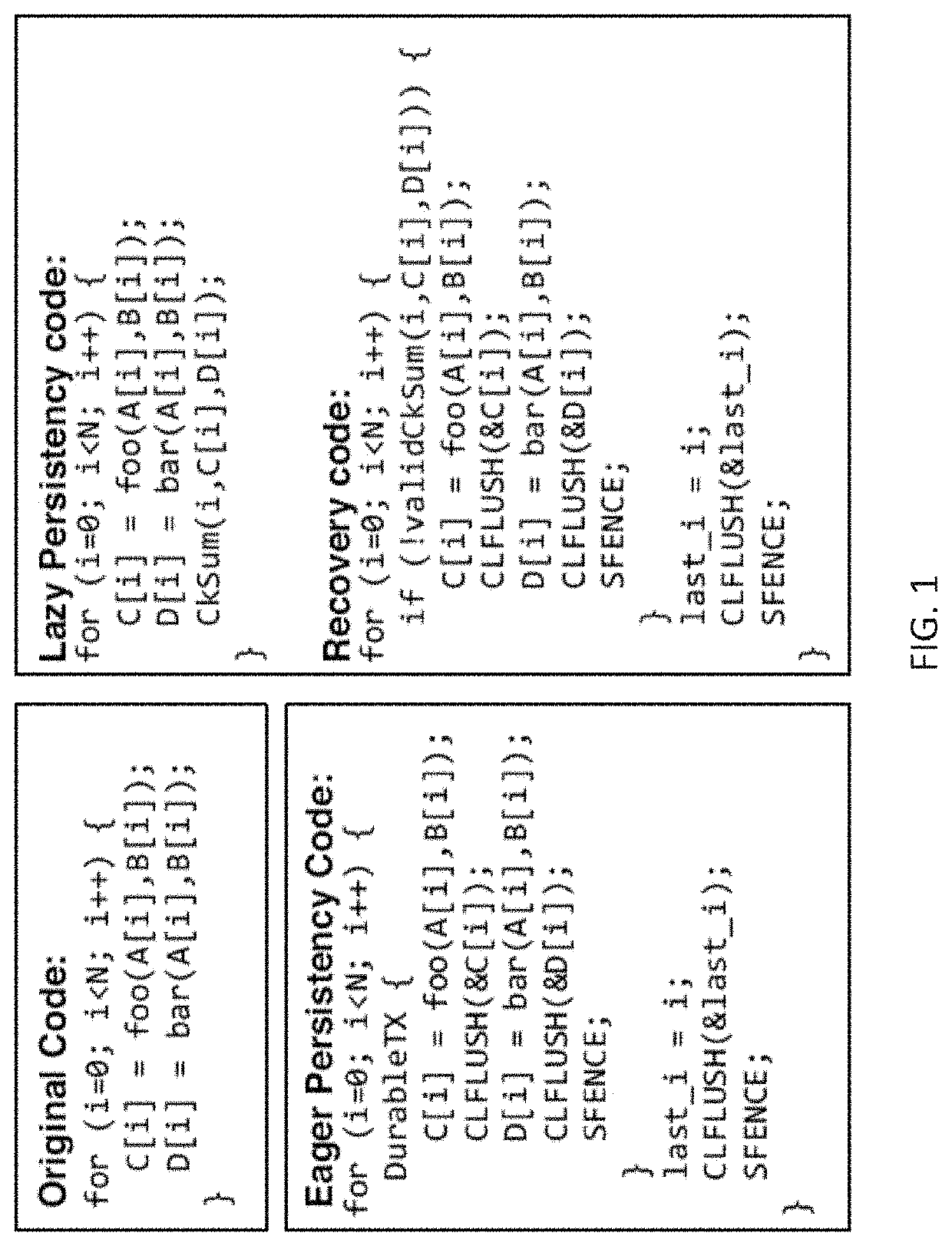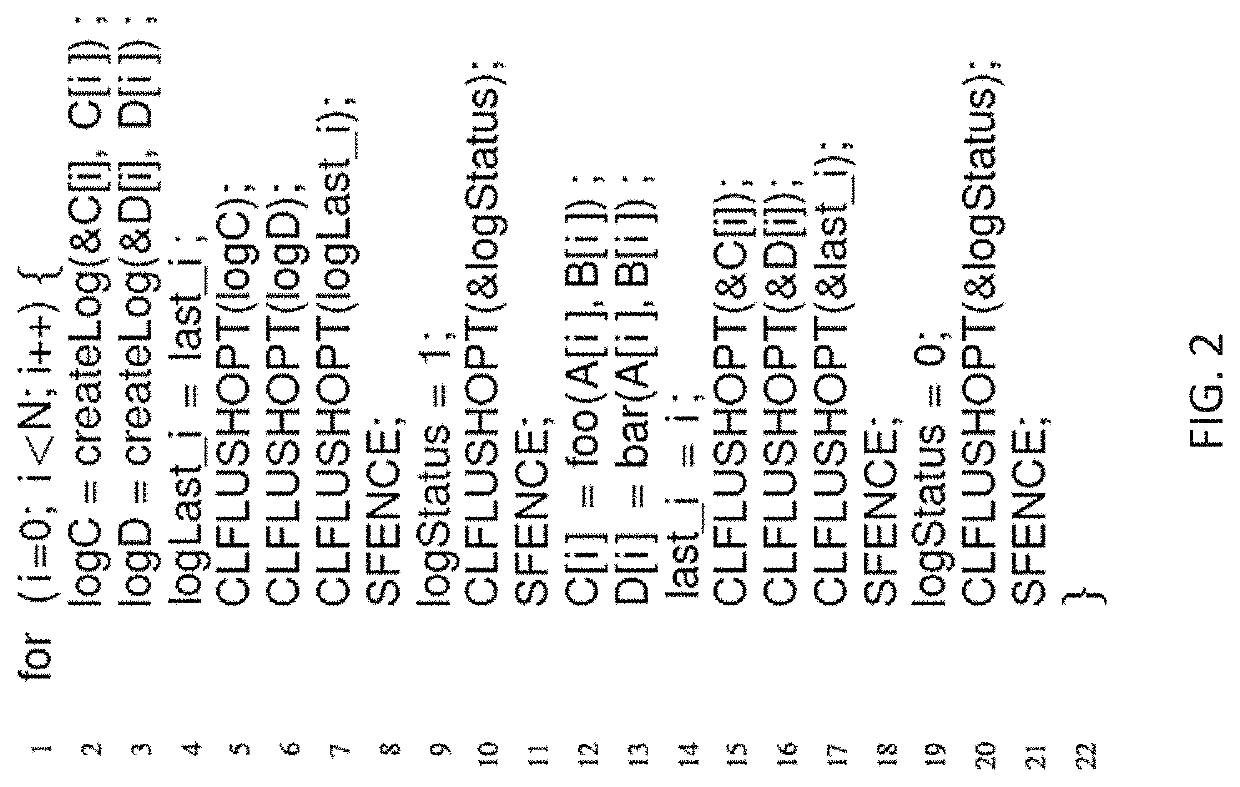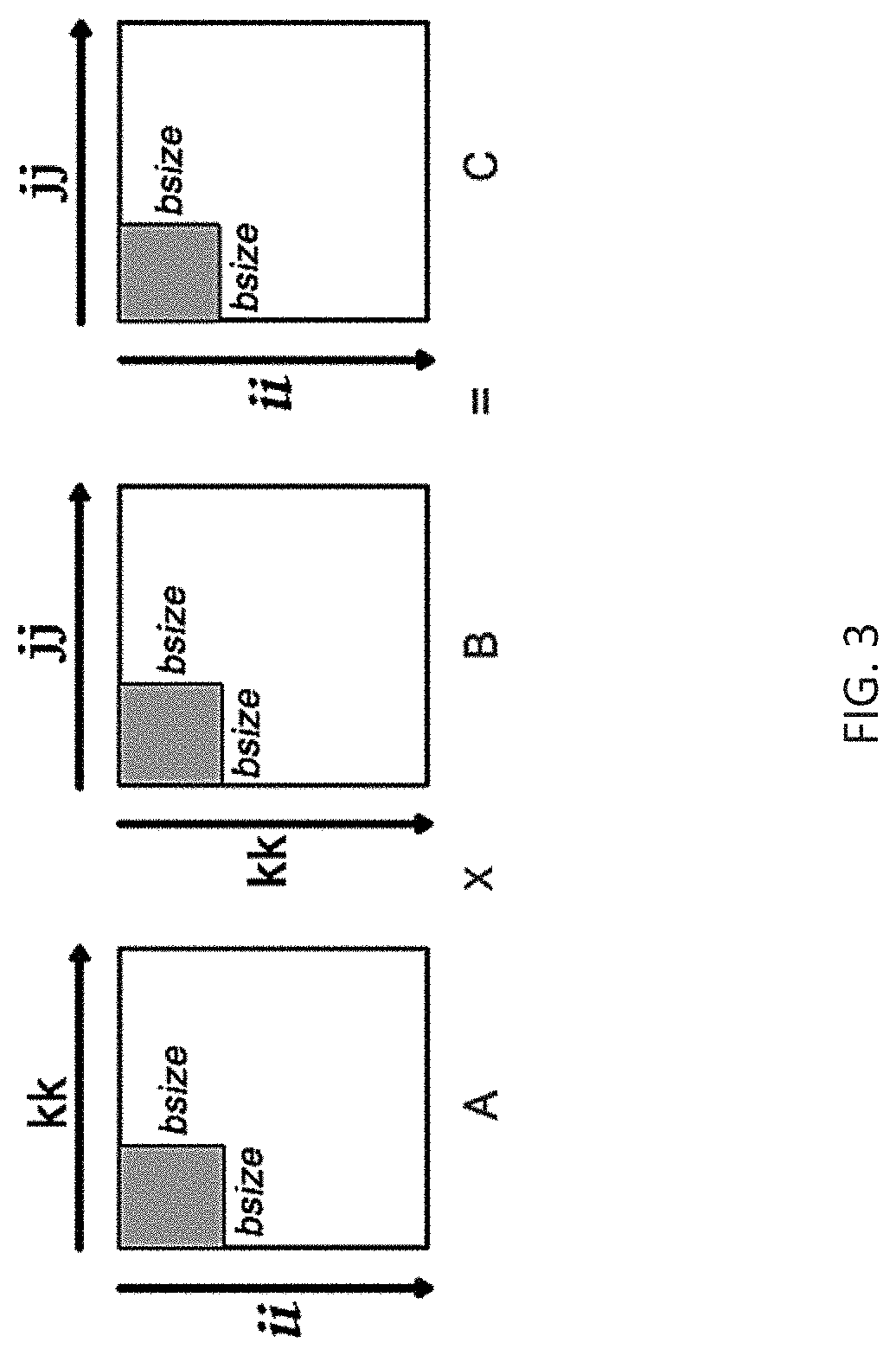Methods of crash recovery for data stored in non-volatile main memory
a data store and main memory technology, applied in the field of crash recovery, can solve the problems of data stored in volatile memory sources, work must be re-run, and significant performance overhead, and achieve the effect of reducing computing costs
- Summary
- Abstract
- Description
- Claims
- Application Information
AI Technical Summary
Benefits of technology
Problems solved by technology
Method used
Image
Examples
example 1
[0070]Prior to the proposed method, there have been recent attempts to provide a fault tolerant algorithm thereby creating persistent memory, which may be referred to as Eager Persistency, and is exemplified by the INTEL® PMEM platform. PMEM provides several instructions, such as cache line write back (clwb) and optimized cache line flush (clflushopt), in addition to existing x86 instructions, such as cache line flush (clflush) and store fence (sfence). With PMEM, programmers must explicitly flush a cache block written to by a store instruction in order to force the store to become durable. A store fence is needed afterward to avoid subsequent stores (younger stores) from becoming durable before preceding stores (older stores). Thus, a store fence has two roles: it acts as memory barrier that ensures older stores are visible to other threads, and it acts as a durable barrier that ensures older stores (including cache line flush or write back instructions) are durable prior to younge...
example 2
[0127]In another embodiment of the present invention, a Hybrid Recompute method is used to save data while not requiring persistency regions to be associative (a requirement of Lazy Persistency, described in detail above), as each region is guaranteed to be persisted before moving to the next region. Instead, the method persists a result matrix, the c matrix, in a non-atomic manner. Hence, while updating the c matrix, there is no guarantee of precisely consistent state. However, all updates to the matrix are durable and the system periodically waits for them to finish. If failure occurs before the updates to the c matrix are durable, it is possible that some elements of the c matrix are in an inconsistent state. However, because the induction variables in the loop nest are atomically updated, the exact region of the c matrix that may be inconsistent is known. If a failure occurs, the state is discarded, and the state's values are recomputed to restore the state of the matrix back to...
PUM
 Login to View More
Login to View More Abstract
Description
Claims
Application Information
 Login to View More
Login to View More - R&D
- Intellectual Property
- Life Sciences
- Materials
- Tech Scout
- Unparalleled Data Quality
- Higher Quality Content
- 60% Fewer Hallucinations
Browse by: Latest US Patents, China's latest patents, Technical Efficacy Thesaurus, Application Domain, Technology Topic, Popular Technical Reports.
© 2025 PatSnap. All rights reserved.Legal|Privacy policy|Modern Slavery Act Transparency Statement|Sitemap|About US| Contact US: help@patsnap.com



